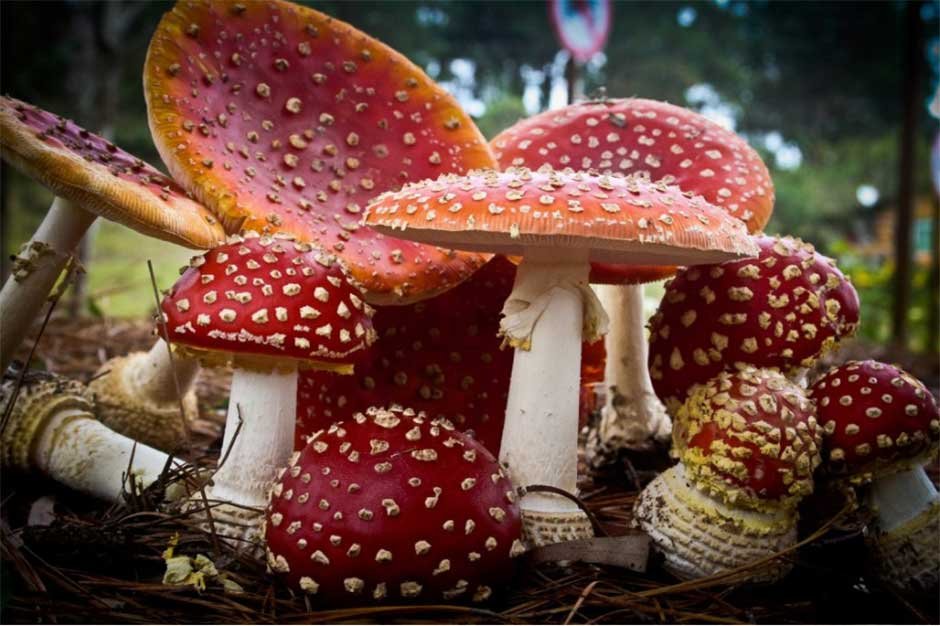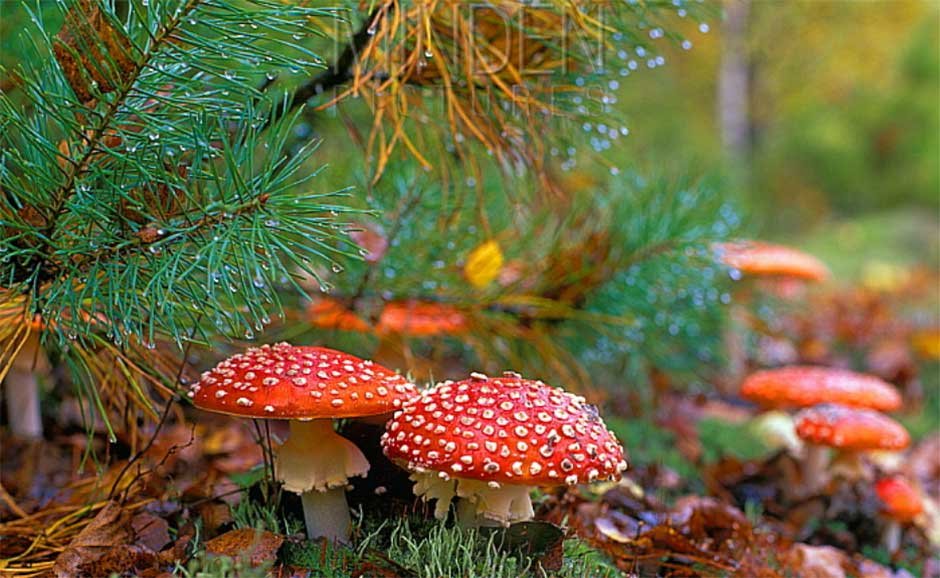Amanita muscaria, also known as the fly agaric or simply “shrooms,” is one of the most recognizable mushrooms in nature. While they certainly look exciting and mysterious, there is much more to these versatile fungi than meets the eye. With colorful spots on top of its cap and a white stalk surrounding it underneath, Amanita Muscaria has entranced people for centuries with its unmistakable appearance and fascinating facts.
This blog post will uncover some genuinely captivating insights about this type of mushroom, including where you can find them growing in North America, their different medicinal uses throughout history, their strange cultural associations around the world, and even which animals consume them regularly!
1)Contain ibotenic acid and muscimol
Amanita Muscaria mushrooms are one of the unique mushrooms in the world. They provide an incredible display of vibrant red and yellow colors and contain psychoactive properties that make them a fascinating topic of study. Their scientific name – Amanita Muscaria – comes from the Latin term ‘amanita,’ which translates to ‘toadstool’ or fungi. These psychedelic fungi contain ibotenic acid and muscimol, naturally occurring psychoactive chemicals that can induce hallucinations or psychotropic effects when consumed.
Interestingly enough, some evidence suggests these mushrooms were sacred to Siberian shamans during ancient times because their psychedelic properties could alter one’s consciousness and aid in spiritual practices. No doubt this mushroom species continues to fascinate us despite its lack of edibility, but remember: it is not recommended to be consumed!
2)Used for centuries in religious ceremonies
Amanita Muscaria mushrooms are a fascinating species with a long and varied usage history. Native to the northern hemisphere of the globe, they have been ingested in various forms since ancient times by different cultures for their hallucinogenic and medicinal purposes. These iconic mushrooms have been involved in traditional religious ceremonies by peoples such as the Koyoti and Huichol of North America, the Sámi of Scandinavia, Siberians, and Russians, among many others. Not only have bulk amanita mushrooms been used for centuries as part of religious practices, but other delightful facts about these fungi include that it is edible when boiled or parboiled multiple times; it contains psychoactive alkaloids including muscimol; and their bright coloration almost guarantees its easy identification.
Additionally, contact with Amanita Muscaria releases “red rain,” a phenomenon characterized by fine drops of red liquid originating from the fungus itself and caused by a combination of condensation and antifreeze secretion to survive cold temperatures at night. Overall, Amanita Muscaria mushrooms remain shrouded in mystery due to the functional yet esoteric purposes they were employed for throughout history; nevertheless, their importance is recognized across continents today.
Amanita Muscaria mushrooms have been used medicinally and recreationally for centuries, but their effects can vary depending on the individual. Although they are occasionally confused with other deadly varieties of mushrooms, Amanitas are not generally considered dangerous to eat. Still, this fungus should be eaten with caution as it contains compounds that can be toxic in large doses. The active chemical is muscimol, which can induce feelings of euphoria and hallucinations in small doses.
Some anthropologists believe that ingredients from these mushrooms may have played a role in religious rituals worldwide. Because Amanita mushrooms contain varying amounts of toxins, it’s best to consult a knowledgeable source before consuming them—or even handling them—to ensure you don’t accidentally consume something hazardous.
3)It can be toxic if ingested
Amanita Muscaria mushrooms have been used medicinally and recreationally for centuries, but their effects can vary depending on the individual. Although they are occasionally confused with other deadly varieties of mushrooms, Amanitas are not generally considered dangerous to eat. Still, this fungus should be eaten with caution as it contains compounds that can be toxic in large doses. The active chemical is muscimol, which can induce feelings of euphoria and hallucinations in small doses.
Some anthropologists believe that ingredients from these mushrooms may have played a role in religious rituals worldwide. Because Amanita mushrooms contain varying amounts of toxins, it’s best to consult a knowledgeable source before consuming them—or even handling them—to ensure you don’t accidentally consume something hazardous.
4)Often found growing near pine trees.

Amanita Muscaria mushrooms are fascinating all on their own, with a history spanning thousands of years. They are often found near pine trees and can vary in color from bright red to yellow, orange, or white. Furthermore, it is suspected that these mushrooms have been used for religious or ceremonial purposes, as they were commonly depicted in paintings from medieval Europe – a historical period marked by pagan religion and goddess worship. People have also associated the Amanita Muscaria mushroom with spiritual experiences due to its psychoactive properties, which can cause physical and mental stimulation. For those looking for more information about these unusual fungi, the internet is flooded with resources for curious minds alike!
5)Considered a legal drug in some countries
Amanita, Muscaria mushrooms, also known as fly agaric, is one of the fascinating fungi in nature. Native to colder climates, these mushrooms contain incredibly hallucinogenic properties and can even be used as a recreational drug. As a result, several countries consider Amanita Muscaria a legal drug. The recreational use of this type of mushroom has been shown to have its roots in ancient civilizations that may have employed it for shamanic practices.
The effects of consumption include vivid visions and mild out-of-body experiences – without the dangers of taking illegal drugs. This is why many countries now regulate and legalize its possession and sale as an alternative to other more dangerous drugs on the market today. As such, while they may be known as “magic mushrooms” to some, Amanita Muscaria mushrooms should always be taken with caution and moderation when used recreationally.
6)Potential therapeutic benefits

Amanita Muscaria mushrooms have held a place of cultural and medicinal importance for centuries. These mushrooms are renowned for the bright red and white caps that adorn them, leading to their common nickname – the fly agaric mushroom. There is much more to these mushrooms than their outward appearance, though. For example, they contain some of the most potent neurotoxins known to man, yet they hold a history of being consumed by indigenous cultures as a way to connect with divine spirits or create visions. Today, there is ongoing research into amanita muscaria explicitly being used as treatments for neurodegenerative diseases such as Alzheimer’s Disease and Autism Spectrum Disorder due to their neuroprotective abilities and potential impact on neurotransmitter pathways in the brain. Amanita muscaria certainly has an exciting history and vast potential for its use in modern medicine.
Conclusion:
We need to learn many things about Amanita Muscaria mushrooms, but the six facts in this blog post provide a good starting point for understanding these strange fungi. If you’re interested in learning more, plenty of resources are available online and in libraries. Whatever your level of interest, take some time to learn about Amanita Muscaria mushrooms – you might be surprised by what you find!


















Comments